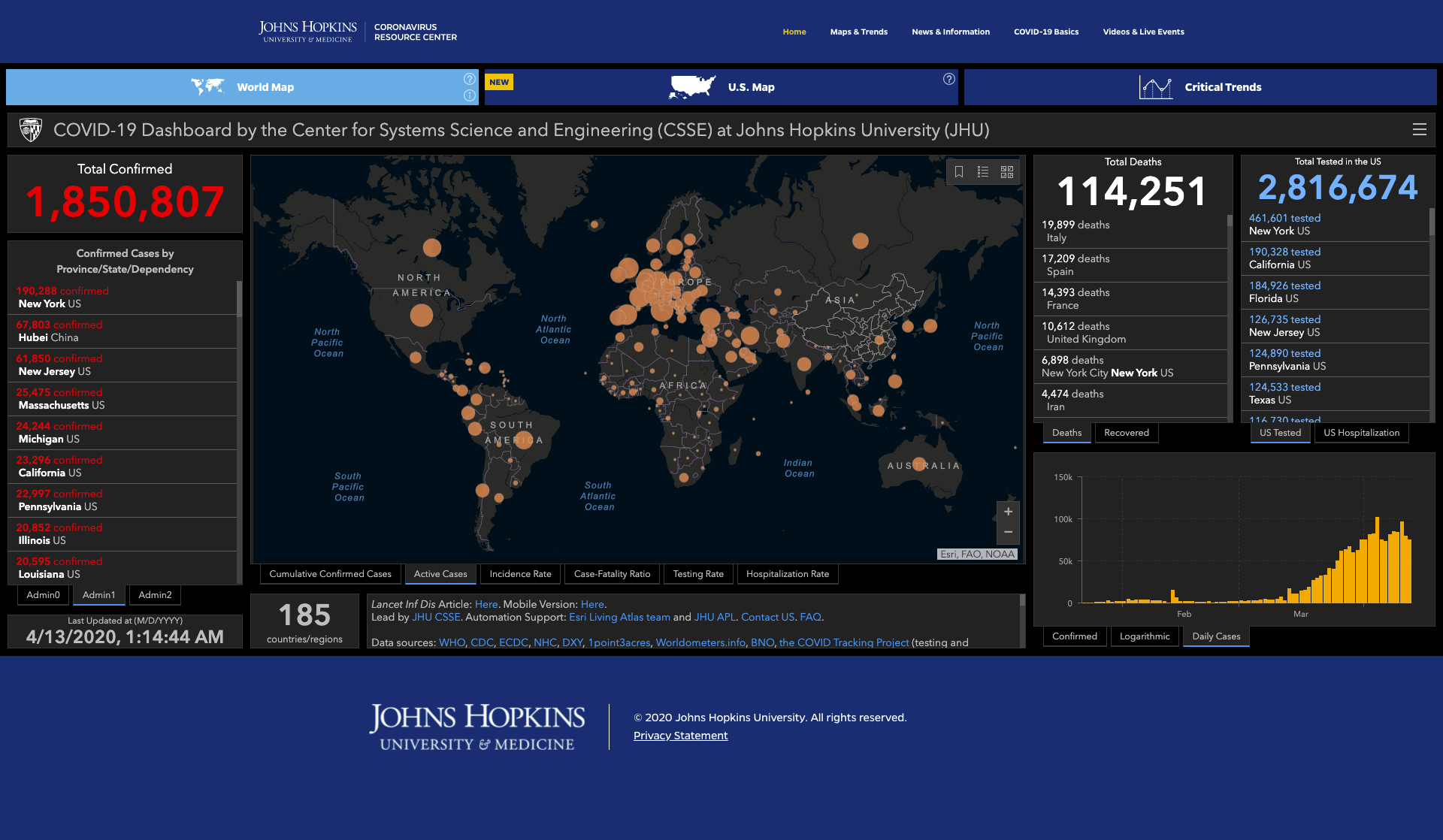Somebody really needs to explain this closing for Easter thing.
I mean, really. Especially when you’re a Jewish family running a vegan restaurant out in the middle of fucking nowhere (okay, I exaggerate a bit here) that I have to drive a long ways to get to (40 minutes, usually, from my apartment). How does that even remotely make sense?
I buy my coffee there. I have enough for today (Monday). I’m not so sure about tomorrow. And they’re closed on Mondays anyway.
Pandemic
In the following screenshot, taken early this morning, I’m looking at the Johns Hopkins map a bit differently. Here, while the U.S. continues to have eye-popping numbers in cumulative confirmed cases, we’re starting to see a global flattening of the curve on daily cases (figure 1).[1] In evaluating hospital capacity, this is what matters.

Fig. 1. Screenshot, taken at 2:10 am Eastern on April 13, of Johns Hopkins global map of COVID-19 cases.[2]
They’ve added a U.S. map, but it only shows cumulative confirmed cases, and of course there’s no flattening of the curve here. Still, it remedies some defects of the global map, in that you can actually see how many, over 20,000, have died in the U.S. from COVID-19. They really don’t have that broken out that way in the global map. And you can drill down to see the county of your choice.
There are two always very good questions that, as a human scientist, I ask:
- Epistemology: How do we know what we claim to know?
- Critical Theory: Among other things (like—this is the biggie—about power relationships), what’s missing? And why is it missing?
When the Wall Street Journal prints that “[t]he actual number of cases is likely higher, experts say, due to lack of widespread testing, false negatives and differences in reporting standards,”[3] I can see that this is correct.
I can see also that there have been nearly 100,000 more cases in the U.S. and well over 1,000 more deaths in New York City, just since I wrote my last blog post on the topic on April 9th.[4]
It’s a very scary time.
- [1]Center for Systems Science and Engineering, “Coronavirus COVID-19 Global Cases,” April 13, 2020, Johns Hopkins University, https://coronavirus.jhu.edu/map.html↩
- [2]Center for Systems Science and Engineering, “Coronavirus COVID-19 Global Cases,” April 11, 2020, Johns Hopkins University, https://coronavirus.jhu.edu/map.html↩
- [3]Jennifer Levitz, Mike Cherney, and Daniel Michaels, “U.S. Coronavirus Death Toll Passes Italy, Becoming World’s Highest,” Wall Street Journal, April 11, 2020, https://www.wsj.com/articles/health-officials-plead-for-public-to-observe-a-locked-down-easter-11586592822↩
- [4]Center for Systems Science and Engineering, “Coronavirus COVID-19 Global Cases,” April 13, 2020, Johns Hopkins University, https://coronavirus.jhu.edu/map.html↩